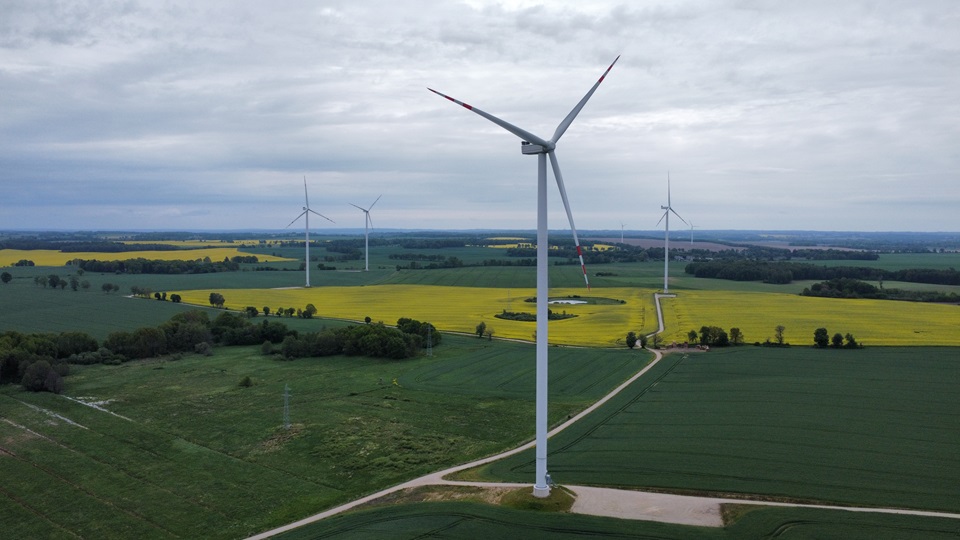Romania can double new renewable energy capacities: will CfD mechanism help in that?

Opinion by Ioannis Kalapodas, Head of the Romanian office, European Energy
Following the European Commission’s decision dated 6 March 2024 to approve a EUR 3 billion for the Contract for Difference (CfD) state aid scheme until 31 December 2025, aimed at expediting the adoption of renewable energy, the regulation establishing CfDs came into effect on 10 April 2024. This regulation provides the general legal framework to implement and operate the CfD support mechanism for low-carbon energy technologies and includes a template CfD contract for onshore wind and solar photovoltaic (PV) projects.
Additional implementation legislation is anticipated, including the Ministry of Energy’s order approving the CfD Scheme for Onshore Wind & PV Solar, the order launching the tender, and secondary legislation by the National Energy Regulatory Authority (ANRE) establishing the methodology for determining the reference price and CfD levy for end consumers, as well as calculating excess profits.
Key elements of the adopted support scheme include: a 15-year contract between the CfD counterparty and the beneficiary, a two-way price stabilization mechanism based on the strike price or payments of difference between the market reference price and the strike price agreed upon in the CfD, funding from a CfD Liquidity Fund (details to be discussed regarding revenue sources, including EUR 3 billion from the Modernization Fund or revenues collected from CfDs) and requirements for new projects of at least 5 MW under CfD to be implemented in Romania.
The commissioning date must not exceed 36 months from the date of aid granting, with a COD longstop date of 24 months from the target commissioning date. A grid connection permit is not required at the submission date, and eligibility conditions outlined in the EC Decision include 10 years of experience, a maximum of 25% of total tendered capacity for each technology, and the possibility of tendering partial capacity, with further details pending issuance by the Ministry of Energy of the Order approving the CfD Scheme.
For sure the adopted regulation for the CfDs is an important step towards green transition, though it needs both improvements and more clarity on certain aspects. This is a process in which we as European Energy are actively involved, having large experience and knowledge in many markets. For instance, the provisions of making amendments in the final tender rules can be improved. Also, the current legislation does not allow PPAs to be concluded under CfD, and participants are required to trade only on the market; both provisions are excessively restrictive and should be eliminated. Clarity is also needed on: the terms of creating the consortium and the participation without consortium, the changes of the reference prices, what happens in case of failure of submitting the grid connection approval (ATR), technical solutions concerning the ATR, requirements concerning the SCADA, etc. on the project’s operational side, the participation in the Auction of projects that did not obtain Grid Connection Approval (ATR), the contractual uncertainty due to the fact that the counterparty OPCOM has the right to terminate unilaterally the CfD Agreement, the mitigation plan for the projects that will be awarded and will not obtain the CfD contract or connect on time, as well as other matters.
However, it is evident that the support scheme’s outlined auction cycles with a total capacity of 5 GW, scheduled for 2024 and 2025, fall short of Romania’s potential and green energy needs, which are more than double the proposed capacity. It is essential to consider energy sales comprehensively, as the CfD scheme can regulate only a portion of the newly installed capacity. Romania requires more than 11 GW to meet its targets, not including the demand for Power-to-X technologies for green fuel production, such as green hydrogen and e-methanol. In fact, the need for additional RES capacity could be substantially higher to meet Romania’s decarbonization targets if the two nuclear reactors in Cernavoda are not deployed in time; in addition, the uncertainty concerning their construction will continue to block available transmission capacity for other power plant projects. The CfD scheme does not currently support hybrid systems (combination PV, BESS, wind), at the same time corporate power purchase agreements (cPPAs), which could facilitate larger renewable energy deployment, are still not quite popular in Romania. Issues with concluding PPAs with local off-takers and the regulation of guarantees of origin (GOs) remain unresolved.
Summarizing, Romania can establish more ambitious goals for the auctions to be able to reach the targets put into the National Energy and Climate Plan; it can either double the announced capacities to more than 11 GW of renewables, or couple it with other support to ensure a faster takeoff of investments. However, without good policy design of CfDs and general regulatory framework, our progress in green transition would be slower than expected. We need to simplify the regulations including on energy sales and effectively open the path for PPAs, shorten the permitting processes, adopt clear grid connection terms and conditions, develop more efficient legislation allowing not only physical private purchase agreements, but also virtual (or so called financial) and, in broader terms, ensure a climate of political and economic stability much needed by any investor. More efficient regulations for the guarantees of origin are needed, as well as for the market balancing, reducing balancing costs for electricity producers so as not to be the most expensive in Europe. Additionally, the legislation concerning green fuels as hydrogen and e-methanol has to be market oriented, and well-embedded in national policy.
All these measures will benefit renewable energy developers and investors, but not only. The long list of those to gain from more renewable energy includes the consumers of cleaner and cheaper electricity, but also farmers and landowners, local businesses, local communities and average citizens, who would see a growing taxation base for local budgets and new jobs in environment friendly investments.
So we are looking forward to see the next steps for setting a submission deadline for applications in early July.














